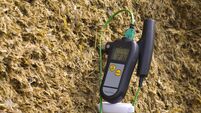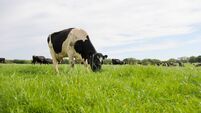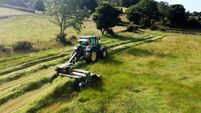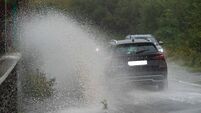Milk production this August — there's still a long way to go until drying off

If we get rapid growth, the grass dry matter will dramatically decrease, and most swards will then be between 14% and 16% dry matter, writes Brian Reidy.
As we all know, the farm gate milk price remains strong as spring herds head into the last third of the lactation. What needs to be focused on by dairy producers over the coming weeks?
Depending on your production system, etc, you will be looking at maintaining herd performance, autumn fertiliser plans, reseeding, third-cut silage, scanning, monitoring heifer performance, winter feed budgeting, harvesting of crops, autumn calving and many more tasks.
Keeping spring cows milking well must be high on the agenda, as they still have a long way to go before drying off. Yet again this year, it has not been uncommon to hear reports of herds dropping off by three or four litres in a week.
This is never an acceptable yield drop, curve or trend. Growth was poor up until recently, and energy and protein in grass had not been what you would expect. Low proteins depress intake and reduce energy available to the cow for milk production.
During the dry spell, most herds had to go in with extra feed to maintain intakes and performance, and now, unfortunately, it seems many have pulled back on the extra feed too quickly and grass intakes have not increased fast enough to match performance.
Remember also, that as we move into August, autumn grass can be a bit of a mystery as it can be feeding very well one day and all of a sudden it loses its power. This issue occurs every year and is caused by more than one thing.
The age of the sward, soil fertility, fertiliser application and weather all have an influence on the grass that cows consume in the autumn and what nutrients are available from it. We have seen a bounce in growth after the recent rain, which will be very welcome.
Grass allocation must obviously be done based on dry matter not fresh feed available, so recalibrating yourself to allow for a bigger area to get the appropriate dry matter into your cows each day will be needed.
This will be a big adjustment, as in the very dry and warm weeks, grass had been 24% to 26% dry matter due to slow growth and moisture deficits. This issue may very well account for a further drop-off in yields, where cows are simply not being allocated enough grass dry matter and/or are not capable of consuming sufficient dry matter to maintain yields.
What about the better milkers and heifers in the herd? How are they being catered for as grass dry matter drops? Is extra supplementation required to bridge the gap and should that come from continuing to feed, or reintroducing some conserved forage or from additional parlour feed? Is feeding to yield or individual heifers possible?
What feed to yield will allow you to do though, is produce more milk from the same amount of concentrates. The cows who deserve it will get it, and the cows that don’t deserve it won’t.
It will also allow you to look after heifers individually while also helping to adjust body condition in individual cows. This system is also ideal when calving, as it can be used to increase safely and optimise dry matter intake in the fresh cows and heifers automatically.
Any dramatic drops in milk yield, protein, butter fat and lactose are indications your herd is not receiving and/or digesting sufficient energy to maintain performance. Increases in SCC can also be linked to nutritional stress.
The milk solid percentages in your herd will be influenced by milk yields, and, as such, we really must convert figures to kilos of milk solids before we begin to make comparisons from cow to cow and herd to herd. A higher volume herd may have slightly lower solids percentage-wise — remember that everyone supplying the same buyer receives the same price per kilo of milk solids.
The average spring calved cow in Ireland is only at about day 175-180 of their lactation, so it is a bit off late lactation just yet. Milk ureas have fluctuated a lot recently. During the dry spell, it was very low on many farms and since the rain, recovery in sward quality has increased significantly.
As I mentioned above, herds still have a good way to go before they get to the end of their lactation. Assess your herds energy requirements and feed accordingly once you have optimised grass intake.
Don’t accept a drop off in milk of more than 1.5%-2% per week. The prospects remain excellent for milk price for the remainder of the year, make sure you position your herd to take advantage of this.
- Brian Reidy is an independent ruminant nutritionist at Premier Farm Nutrition













